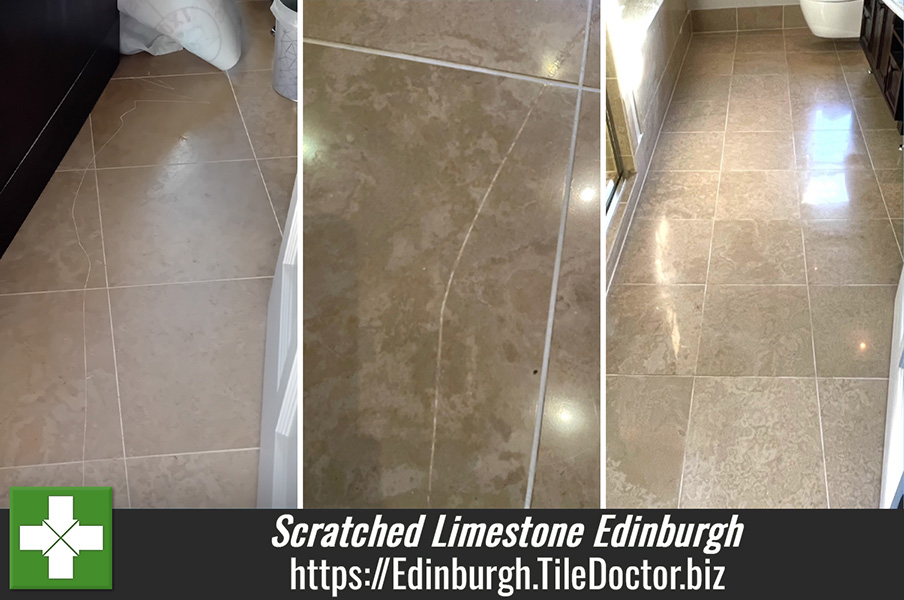Removing Scratches from Polished Stone Floor with Tile Doctor Milling Pads in Edinburgh
I recently visited a property in the New Town area of Edinburgh recently to look at a Limestone bathroom floor that had been badly scratched when the client moved some furniture.

A sideboard unit had been dragged across the bathroom floor, and it had scratched almost the full length of the tiled floor. At first, they tried to use a company to repair it, but the scratch was still very visible. All they managed to do was fill and then paint over it. This looked poor and you could still see that the floor had a major scratch, drawing your eye to it immediately.

Luckily at Tile Doctor we regularly receive enquiries about damage like this on many different types of floor and wall tiles (marble, limestone, travertine and flagstones). With the correct equipment and trained specialists’ scratches like this one can be repaired to the point of it being invisible.
In this case I recommended milling the floor with very coarse diamond pads to remove the scratch and then polishing with finer pads to restore the finish and bring up the polish. It’s a lot of work but it will give the desired result. Happy with quote a date was set for the work to start.
Repairing a Limestone Tiled Bathroom Floor
To carry out the work I first prepped the room to protect the furniture and glass shower doors from being sprayed with residue from the milling that was about to start. Milling is a process of removing a fine layer of the limestone tiles using varying levels of coarse diamond milling pads with different levels of grit. It is an important part of the process and one that required a great deal of patience and skill to ensure the tiles are kept flat and no indents are left by working on the area in an uneven way. The milling pads generate residue which is rinsed off with water and extracted with a wet vacuum, it also allows you to see the scratch starting to disappear after each pad.
The next step was to bring up the polished appearance of the Limestone by applying a series of Burnishing pads from Coarse to Very Fine. This process hones the stone adding a lovely deep shine.
Sealing a Limestone Tiled Bathroom Floor
Once the floor had been left to dry out for a couple of days, I returned to seal the floor with Tile Doctor Colour Grow, an impregnating, colour enhancing and tough sealer. This was applied using a white cotton cloth and was left on for ten minutes. The residue was then buffed off with a White Pad and left for thirty minutes. A second coat was applied and the same procedure followed. After two hours I performed a water test to confirm the floor was fully sealed.

My client was delighted with the result. They were so happy that we had managed to remove the scratch as they had thought the damage would be irreparable. For aftercare cleaning I recommended the use of Tile Doctor Stone Soap which is a ph neutral cleaner that helps maintain the patina.
Source: Professional Stone Floor Scratch Removal Service near Edinburgh
